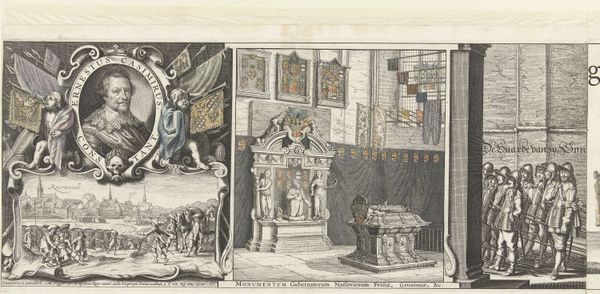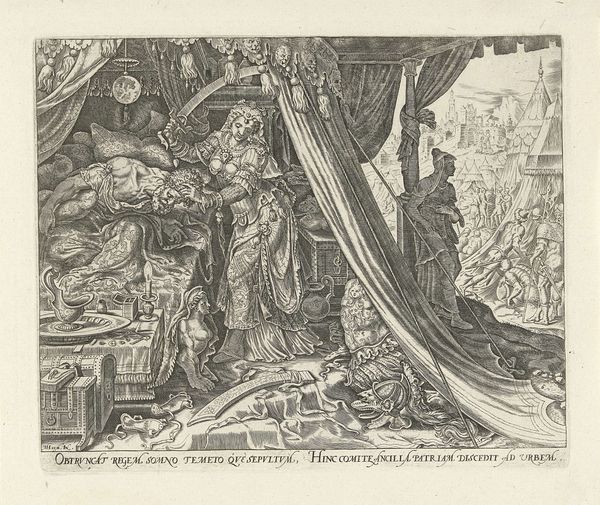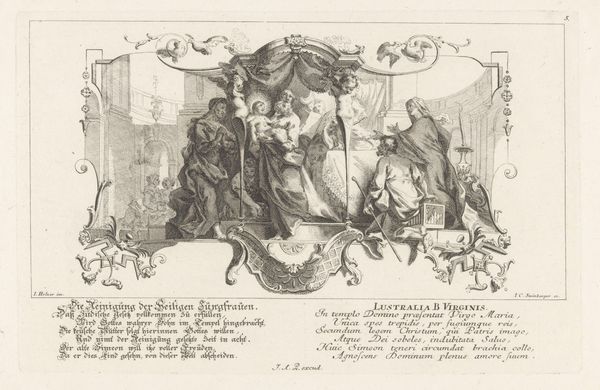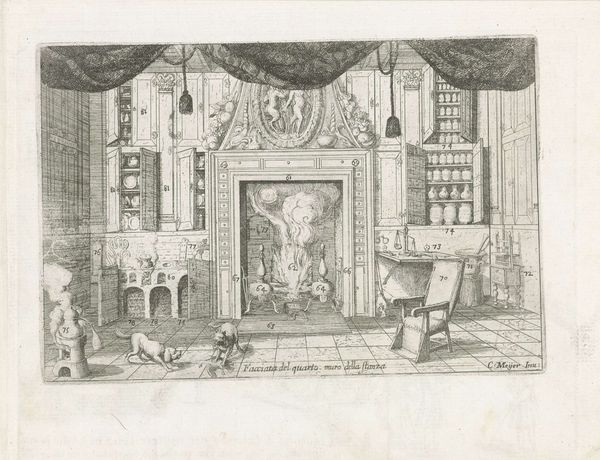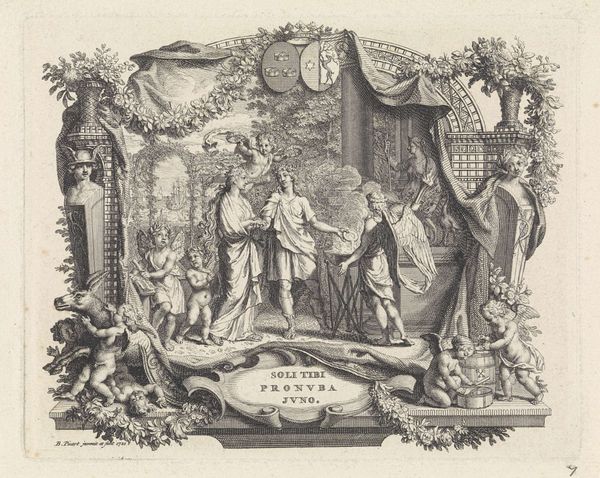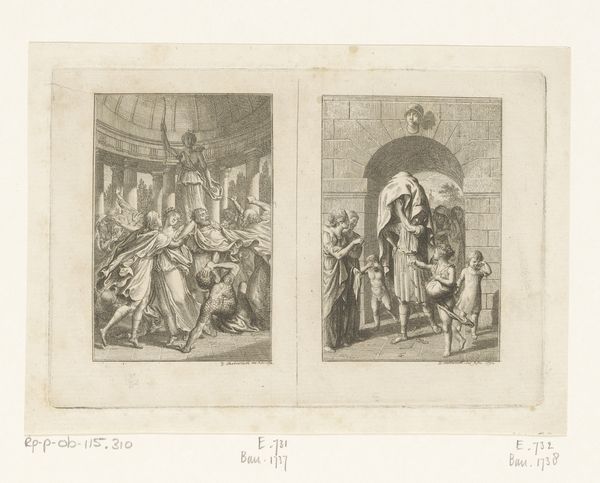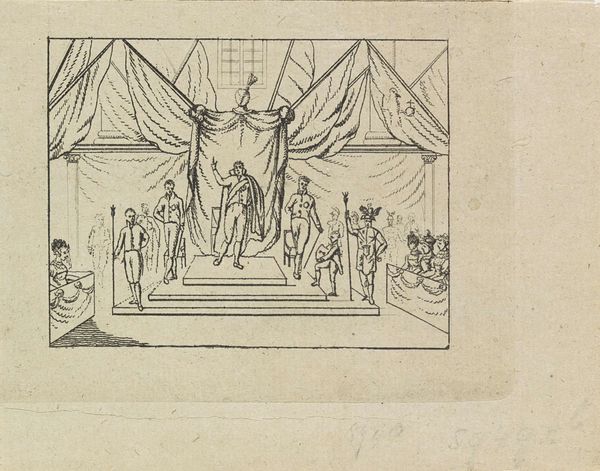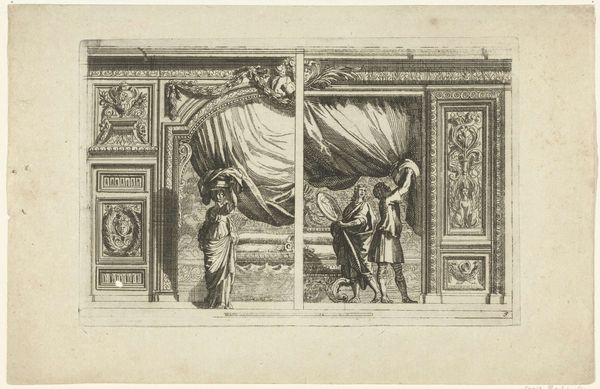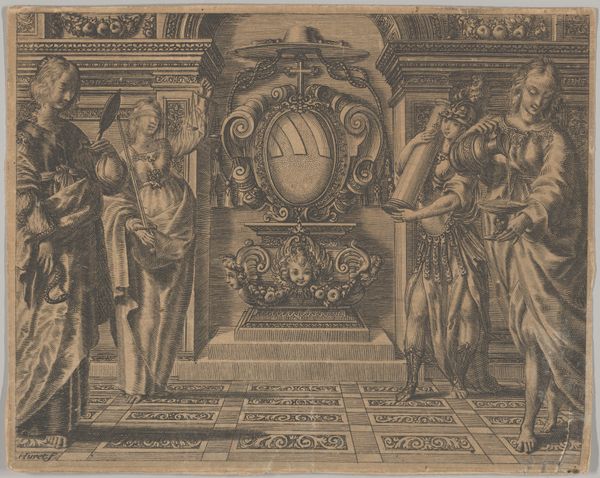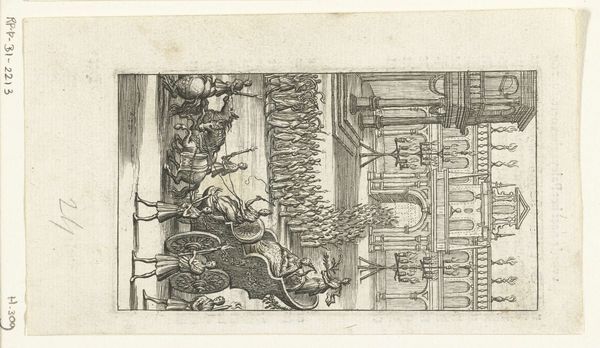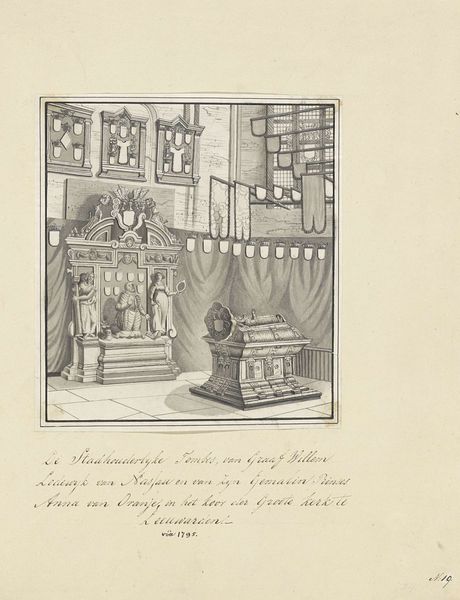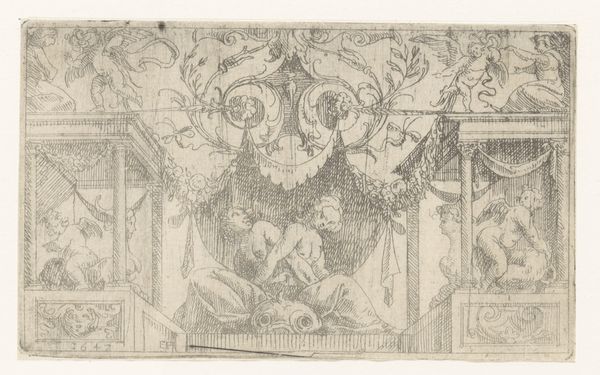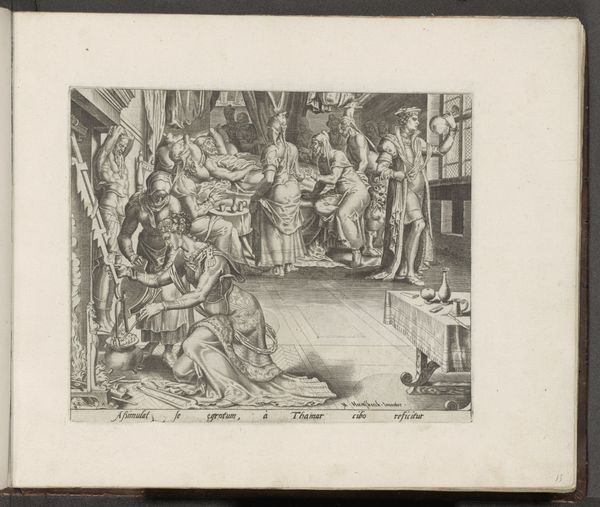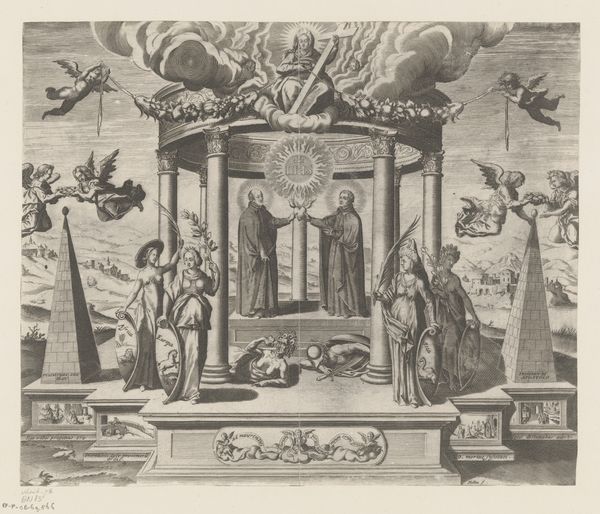
print, engraving
#
medieval
# print
#
old engraving style
#
11_renaissance
#
cityscape
#
history-painting
#
engraving
Dimensions: height 180 mm, width 242 mm
Copyright: Rijks Museum: Open Domain
Curator: Materially speaking, this engraving, “Kist in een kerkinterieur” from 1592 by Frans Hogenberg, really puts labor on display. It reminds us that images, even then, weren’t just magically appearing – skilled hands and resources shaped them. Editor: This piece is fascinating; there's so much detail, considering the print medium. It has a very solemn mood, but also there’s a clear emphasis on civic display through those armorial banners. What strikes you most about it? Curator: What's significant to me are the means of production it suggests. The engraving process, the ink, the paper - these elements situate the image within a specific social context. How was the paper sourced? Who mixed the ink, and from what materials? What socio-economic class did the engraver come from? These were trade skills learned via apprenticeship, weren't they? This wasn't necessarily considered “high art.” Editor: I hadn’t thought of it that way. I guess I was too focused on the heraldry and the scene. Are you saying it blurs the lines between art and craft because its production involves a trade? Curator: Precisely! The very act of creating multiple prints suggests wider distribution, appealing perhaps to a broader, possibly less elite, consumer base. Look at the clothing of the figures in the engraving—what does it tell us about social status and the textile trade of the era? Even the choice of subject matter – a civic ceremony– aligns with a materialist perspective; Hogenberg’s print becomes a commodity within a larger network of exchange. What kind of consumption, and by whom, was he facilitating? Editor: So it's not just the image itself, but the entire production process and its place within the economy of the time. Curator: Exactly. By interrogating the materiality of the print, we gain insight into 16th-century labor, consumption, and the complex relationship between art, craft, and social status. Editor: I learned to not just look *at* the art, but also *through* it, understanding all its components, labor, and materials in historical context.
Comments
No comments
Be the first to comment and join the conversation on the ultimate creative platform.
